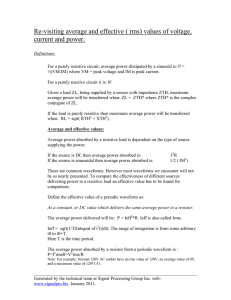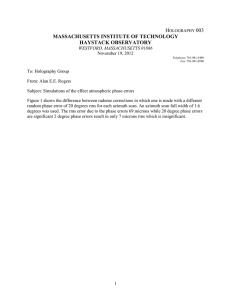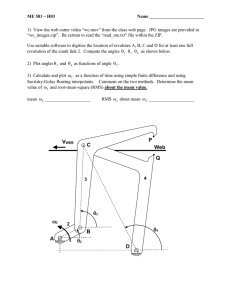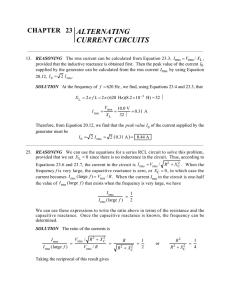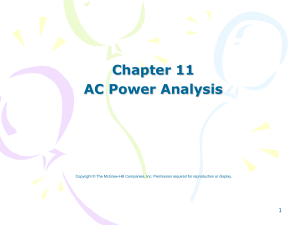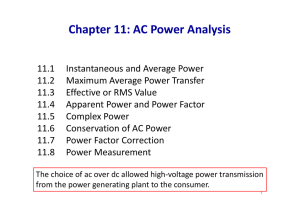EEE 302 Electrical Networks II Dr. Keith E. Holbert Summer 2001
advertisement
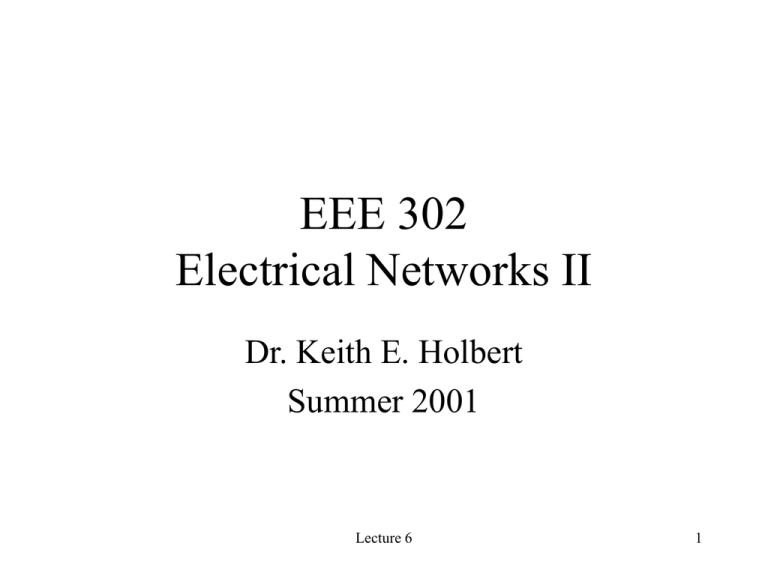
EEE 302 Electrical Networks II Dr. Keith E. Holbert Summer 2001 Lecture 6 1 Maximum Average Power Transfer • To obtain the maximum average power transfer to a load, the load impedance (ZL) should be chosen equal to the complex conjugate of the Thevenin equivalent impedance representing the remainder of the network ZL = RL + j XL = RTh - j XTh = ZTh* Lecture 6 2 Maximum Average Power Transfer ZTh Voc + - ZL ZL = ZTh* • Note that ONLY the resistive component of the load dissipates power Lecture 6 3 Max Power Xfer: Cases Load Load Equivalent Characteristic Complex ZL = ZTh* = RTh - j XTh Purely Resistive Z R = R 2 + X 2 L L Th Th (i.e., XL=0) Further reduces to ZL= RL=RTh for XTh=0 (old DC way) Purely Reactive No Average power transfer to load; Not really a case (i.e., RL=0) Lecture 6 4 Class Examples • Extension Exercise E9.5 • Extension Exercise E9.6 Lecture 6 5 Effective or RMS Values • Root-mean-square value (formula reads like the name: rms) I rms 1 T t 0 T 2 i (t ) dt and t0 Vrms 1 T t 0 T v 2 (t ) dt t0 • For a sinusoid: Irms = IM/2 – For example, AC household outlets are 120 Volts-rms Lecture 6 6 Why RMS Values? • The effective/rms current allows us to write average power expressions like those used in dc circuits (i.e., P=I²R), and that relation is really the basis for defining the rms value • The average power (P) is 1 Psource VM I M cos v i Vrms I rms cos v i 2 2 Vrms 1 2 Presistor VM I M Vrms I rms I rms R 2 R Lecture 6 7 Class Examples • Extension Exercise E9.7 • Extension Exercise E9.9 • Extension Exercise E9.10 Lecture 6 8

